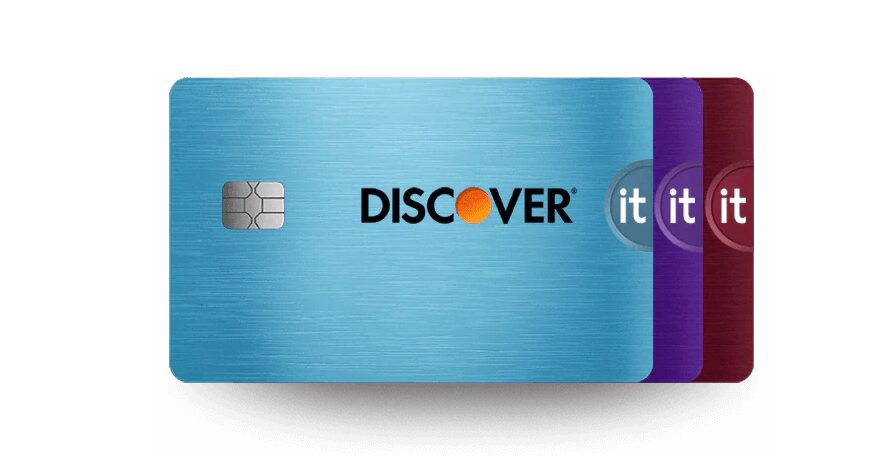The Intersection of Technology and Financial Regulation: Challenges and Opportunities

Unleashing the Potential of Technology in Finance
In the face of constant technological evolution, the financial sector stands at the crossroads of innovation and regulation. With advancements such as blockchain, artificial intelligence (AI), and digital currencies transforming the landscape, we are presented with remarkable opportunities to enhance the way we manage financial activities. However, this transformation also brings along significant challenges that necessitate a careful and considered approach to financial regulation.
One of the most profound impacts of technology on finance is the increased efficiency it brings. Automation and data analytics revolutionize compliance processes, allowing institutions to execute tasks that once required laborious manual effort in a fraction of the time. For instance, AI-driven tools can analyze vast amounts of transaction data to detect anomalies faster than any human, reducing the risk of fraud and ensuring compliance with regulatory requirements. Such innovations not only save time and money but also enable financial institutions to focus on serving customers better.
Moreover, technology enhances transparency, a vital aspect of building trust in the financial system. Blockchain technology, for example, allows for immutable records that offer unprecedented visibility into transactions. This transparency can help mitigate issues around fraud and corruption, as stakeholders can trace transactions and validate data in real time. Imagine being able to see exactly how your funds are being managed, ensuring accountability at every step of the process.
However, as we embrace these innovations, we must remain vigilant about the risk of cyber threats. With the rise of digital solutions, vulnerabilities emerge that can be exploited by malicious actors. Regulatory frameworks must evolve continuously to safeguard against potential breaches that threaten the integrity of our financial systems. Financial institutions are now investing heavily in cybersecurity measures to combat such risks, a necessary step to protect consumers and the economy at large.
Yet, amidst these advancements lies a concerning digital divide. Not all communities, particularly underserved populations, adapt to technological changes at the same pace. This disparity poses serious questions about equity in financial services. For example, while some people benefit from mobile banking and digital wallets, others may lack the necessary access to smart devices or the internet, limiting their financial opportunities. It is imperative that stakeholders work collaboratively to bridge this gap, ensuring that everyone has the tools needed to thrive in this digital-first era.
In this evolving landscape, engagement from all stakeholders is crucial. From regulators developing robust frameworks to consumers making conscious financial decisions, collective responsibility will pave the way for a stronger financial ecosystem. Let us champion a future where technology not only enhances efficiency and transparency but also fosters inclusivity and security for all individuals.
As we navigate this intricate relationship between regulation and innovation, our goal should be to cultivate a balanced approach. By prioritizing security and fairness alongside fostering creativity, we can champion a brighter financial future. Together, we can create an environment where technology elevates our financial landscape, inspiring and empowering every individual to seize control of their financial destiny.
Harnessing Innovations for Financial Regulation
The rapid pace of technological advancement in the financial sector has paved the way for a transformative journey. As we embrace innovations such as artificial intelligence, blockchain, and big data analytics, the potential benefits for financial regulation become evident. These tools not only revolutionize how organizations operate but also provide regulatory bodies with enhanced mechanisms to ensure compliance, promote transparency, and protect consumers. However, navigating this new terrain is fraught with both opportunities and challenges that must be carefully considered.
At the forefront of the opportunities presented by technology is the ability to improve compliance processes significantly. Traditionally, compliance was often seen as a burdensome task involving extensive paperwork and manual audits. Today, technology allows for the automation of many of these processes, freeing up valuable resources and manpower. For instance:
- Real-time reporting: Advanced software enables organizations to generate reports instantaneously, allowing regulators to monitor activities as they occur rather than waiting for periodic submissions.
- Enhanced risk assessment: Machine learning algorithms can analyze historical data and predict potential compliance issues, helping organizations mitigate risks before they escalate.
- Streamlined audits: Data analytics simplifies the audit process, enabling regulators to access relevant information quickly and efficiently.
These tools can help create a culture of compliance where organizations view regulation as a partner in their growth, rather than an obstacle. This shift has the potential to foster even more innovation and stability within the financial ecosystem.
However, the integration of technology into financial regulation is not without its challenges. The rapid pace of digital transformation often outstrips the capabilities of existing regulatory frameworks. Regulators must grapple with determining how to apply traditional compliance standards to novel financial products and services. This often leads to a state of uncertainty among financial institutions about what practices are considered acceptable. For example, the rise of decentralized finance (DeFi) and cryptocurrencies has created a landscape where the existing regulatory frameworks may not be fully equipped to address the unique risks associated with these innovations.
Furthermore, the complexity of technology itself poses a challenge. As financial systems become increasingly dependent on algorithms, machine learning models, and sophisticated software, understanding how these technologies operate becomes essential for regulators. Ensuring that regulators have adequate expertise in technology is paramount for effective oversight. Investment in training and development for regulatory bodies must be prioritized to keep pace with the evolving landscape.
As we move forward, it is crucial for stakeholders to engage in an open dialogue about how technology can enhance regulation while addressing the challenges it brings. Collaboration between technology innovators and regulators will be key in crafting frameworks that not only protect consumers but also encourage responsible innovation. By advocating for a unified vision, we can leverage the benefits of technology to create a fairer and more secure financial landscape.
Navigating Regulatory Challenges with Technological Solutions
As financial technology continues to evolve, the regulatory landscape must not only adapt but also proactively seek innovative solutions to address emerging challenges. One of the striking advancements is the use of regtech (regulatory technology) which aims to streamline processes and significantly reduce compliance costs. This approach harnesses technology to help financial institutions meet regulatory requirements with greater efficiency and accuracy. Regtech solutions utilize various tools such as cloud computing and APIs, transforming compliance from a reactive search for answers to a proactive management process:
- Automated compliance checks: Regtech platforms are capable of monitoring transactions in real-time for suspicious activities or compliance breaches, thus allowing institutions to respond to potential issues immediately.
- Smart contracts: Built on blockchain technology, these digital contracts automatically execute given terms—ensuring compliance and reducing the complexity involved in traditional contracts.
- Identity verification: Using AI-powered tools for know-your-customer (KYC) processes significantly curbs fraud while simplifying onboarding for customers, which is particularly relevant for online platforms.
These developments not only demystify compliance but also democratize access to resources, allowing smaller firms to compete with more established institutions. As regtech solutions become more sophisticated and widely adopted, we can anticipate a leaner regulatory environment that encourages innovation while still safeguarding consumer interests.
However, the interplay between technology and regulation also gives rise to significant privacy and data security concerns. As organizations increasingly rely on large volumes of consumer data to fuel their technology solutions, the risk of data breaches has escalated. Compliance with stringent data protection regulations, such as the California Consumer Privacy Act (CCPA), has become a pressing concern. Institutions must ensure not only that they adhere to existing laws but also that they respect consumer privacy and data integrity. Therefore, organizations must invest in robust cybersecurity measures and continuously update their systems against evolving threats.
The challenge of ensuring compliance while harnessing consumer data presents a dual-edged sword. On one hand, it offers the potential to create highly personalized financial services that meet individual needs. On the other hand, failure to protect sensitive information can lead to significant reputational damage and financial penalties, endangering consumer trust in the financial system. As such, building an ethical framework around data use is imperative for financial institutions to succeed in this evolving landscape.
Moreover, the regulatory environment itself is experiencing rapid transformation. Governments and regulatory bodies in the United States are increasingly exploring the incorporation of sandbox models to test new technologies under a controlled environment. These initiatives enable startups and established firms to pilot innovative products while collaborating with regulators—a win-win for fostering innovation while ensuring compliance. It creates a platform where regulators can understand the nuances of new technologies and their implications, paving the way for more informed policy adjustments.
Ultimately, the convergence of technology and financial regulation should not be viewed solely through the lens of compliance and surveillance. It is a crucial opportunity for financial institutions to elevate their service offerings, embrace transparency, and promote sustainability. By fostering an open dialogue about the responsible use of technology, all stakeholders can work towards a shared vision that balances innovation with accountability. Embracing this approach can lead to a financial ecosystem where consumers feel empowered and protected, urging them to engage more actively and responsibly in their financial decisions.
Embracing a Future of Responsible Innovation
In conclusion, the intersection of technology and financial regulation presents a unique landscape brimming with both challenges and opportunities. As we witness the rise of regtech innovations that streamline compliance and safeguard consumer interests, it is imperative for financial institutions to view these advancements not as burdensome regulations but as stepping stones towards creating a more efficient and transparent financial ecosystem. The adaptability of regulators, alongside the collaborative spirit fostered through sandbox initiatives, paves the way for an invigorated marketplace where innovation and compliance coexist.
However, as the reliance on consumer data grows, the importance of prioritizing privacy and security cannot be overstated. Financial institutions must not only invest in state-of-the-art cybersecurity measures but also cultivate a culture of transparency and ethical data use. This commitment will be essential in maintaining consumer trust and preventing reputational damage that can arise from data breaches.
As stakeholders—consumers, institutions, and regulators—engage in an open dialogue about the responsible use of technology, we can embrace a shared vision that empowers individuals to take active roles in their financial choices. By fostering this collaborative environment, we stand to create a future where technology amplifies financial inclusion and supports a more vibrant economy. Let us move forward with determination and a commitment to navigating this evolving landscape with vigilance and integrity, ensuring that financial innovation serves the broader good and not merely profit margins.
Related posts:
Necessary Documents to Apply for a Personal Loan in the United States
Artificial Intelligence in Credit Risk Analysis
The Influence of Crowdfunding Platforms on the Financing of Social Projects in the USA
American credit cards with cashback and exclusive benefits
The Future of Digital Payments: Trends and Innovations in the USA
Digital platforms to send money from Brazil to the USA

Beatriz Johnson is a seasoned financial analyst and writer with a passion for simplifying the complexities of economics and finance. With over a decade of experience in the industry, she specializes in topics like personal finance, investment strategies, and global economic trends. Through her work on Web Dinheiro, Beatriz empowers readers to make informed financial decisions and stay ahead in the ever-changing economic landscape.







